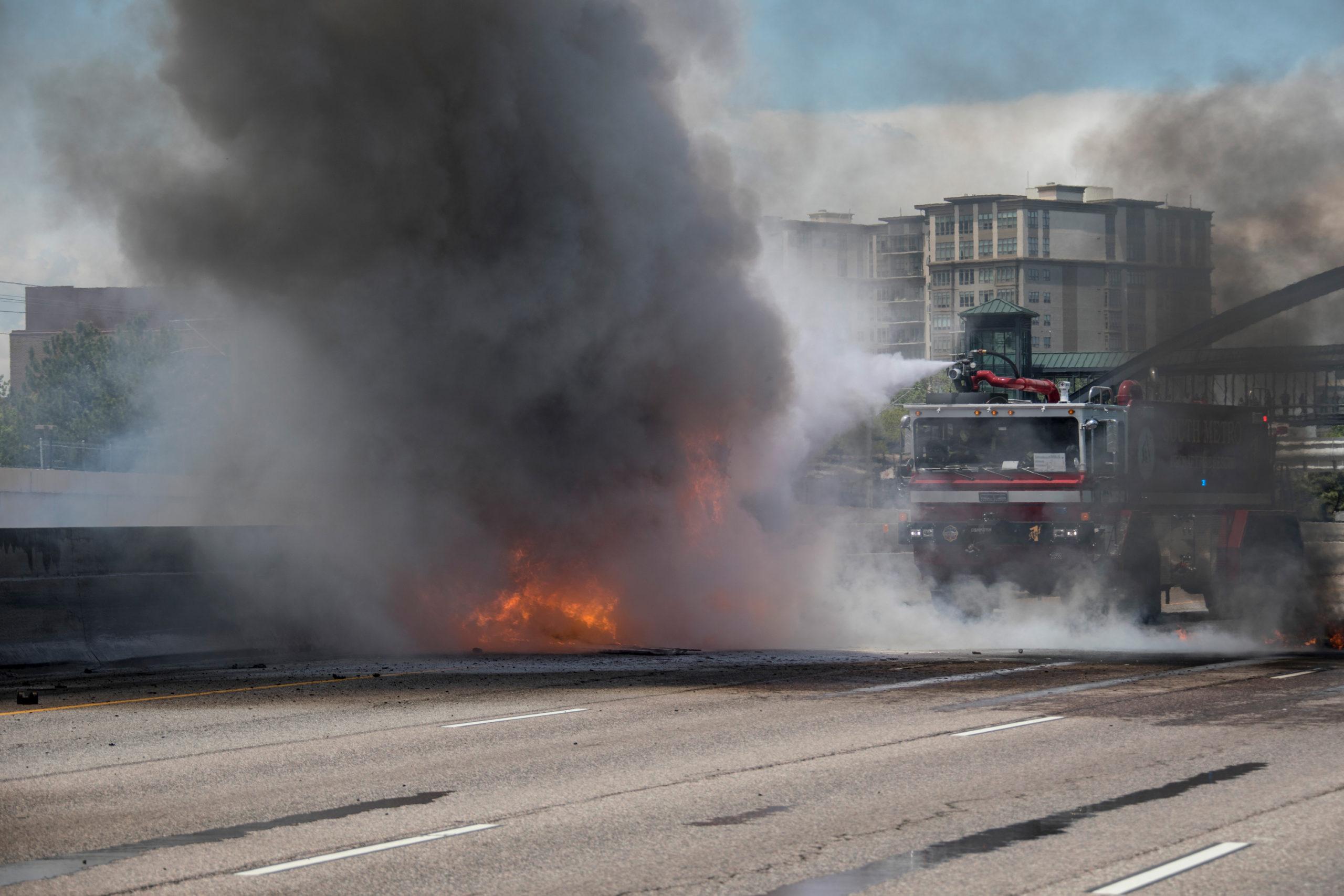
About 60 percent of Colorado fire departments report that they have firefighting foam with synthetic chemicals known as PFAS, according to a recent survey by the Colorado Department of Public Health and Environment.
The Environmental Protection Agency has linked long-term exposure to the so-called forever chemicals to some forms of cancers and low birth weights.
“We are highly cognizant of how dangerous PFAS can be in terms of the cancer-causing properties for our firefighters,” said Greg Pixley, a public information officer with Denver Fire Department “We are working every effort we can to reduce PFAS in our day-to-day operations.”
PFAS chemicals came into the Colorado limelight back in 2016, when the towns of Security, Widefield and Fountain tested above the EPA health advisory recommendations for levels in drinking water. The towns have all switched to drinking water sources without the chemicals, which were eventually traced to the use of Aqueous Film Forming Foam on nearby Peterson Air Force base. Experts think the chemicals leached into the groundwater after being used at the base.
The U.S. military and manufacturers have made strides to move away from PFAS chemicals in recent years, but challenges remain.
An older generation of the firefighting foam containing PFAS has been retired from use in Colorado, and across military bases. Now, a newer version with a different chemical formula is available. Originally it was believed to not accumulate in the body, but research is emerging that shows potentially toxic health effects are concerns for many of the firefighters who use this product on the front lines.
“We’re very concerned about it,” said Bill Nemick, assistant chief of the City of Pueblo Fire Department.
State health officials know PFAS chemicals are a problem. Conducting a survey is one part of the state’s plan to address the health risks. In addition to reporting PFAS foam supplies, health officials asked which fire departments had used PFAS firefighting foam in the past. About 19 departments reporting using the foam.
However, it’s unclear what, if any, testing will happen across those departments that reported using the foam.
The state government has made about $500,000 available with a priority for Colorado’s 890 drinking water districts for testing of PFAS chemicals. But fire departments will be at the back of the line behind drinking water districts to access to those funds, according to state health officials.
According to the state survey, the largest caches of the new PFAS foam is held by Suncor, the Denver Fire Department, South Metro Fire Rescue and the Pueblo Fire Department.
The departments that have large quantities of the new form on hand use it because they respond to fires at regional or municipal airports. The Federal Aviation Administration requires fire responders at some airports to have the PFAS foam on hand to ensure “the extinguishment of the fire for the successful evacuation of passengers and aircrew during an aircraft fire,” according to a statement from the FAA.
“It was a compromise,” said Eric Hurst, a public information officer with South Metro Fire Rescue. “We essentially worked with Centennial Airport to find the safest environmentally friendly [firefighting foam] available and used that.”
The FAA is under the gun to find a replacement by Oct. 4, 2021, at which time it can no longer require the use of PFAS foam.
The agency is currently researching and evaluating replacement firefighting foams. Some airports like London-based Heathrow have switched to a fluorine-free foam that doesn’t have PFAS chemicals linked to health issues.
“[DIA] along with other commercial airports and airport industry associations, continues to press the FAA for a firefighting alternative that would satisfy commercial travel safety responsibilities while reducing the potential for environmental impact,” said Emily Williams, a public information officer with Denver International Airport.
State law does set some limits on how the new PFAS foam can be used. Legislation in 2019 prevents fire districts from using it to conduct training exercises. It is only to be used to fight fires.
Until the FAA comes up with a replacement firefighting foam in 2021, DIA and Centennial Airport handle the newer PFAS foam with great care.









